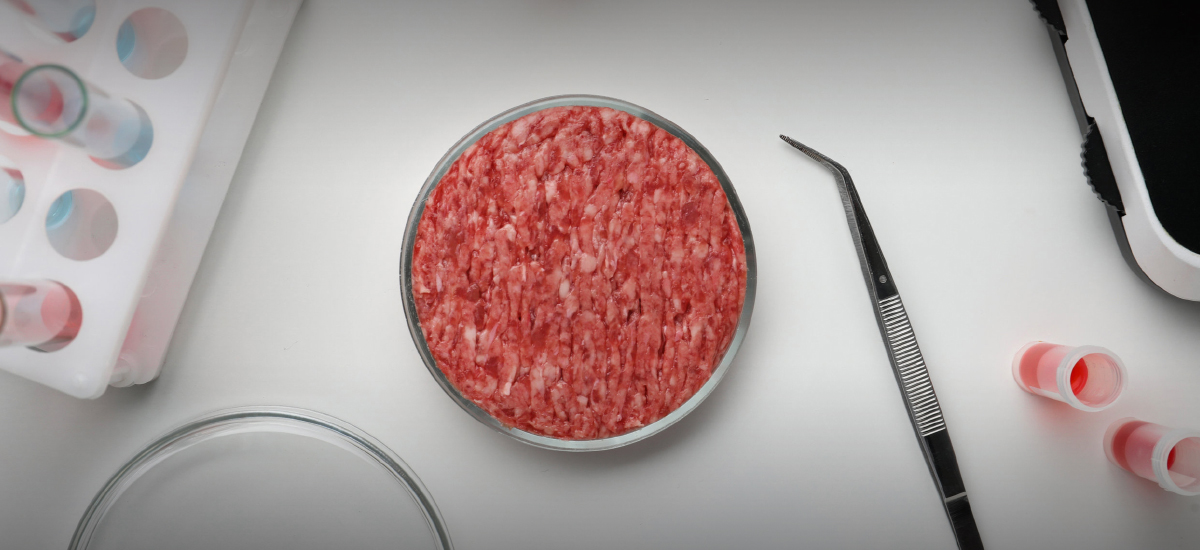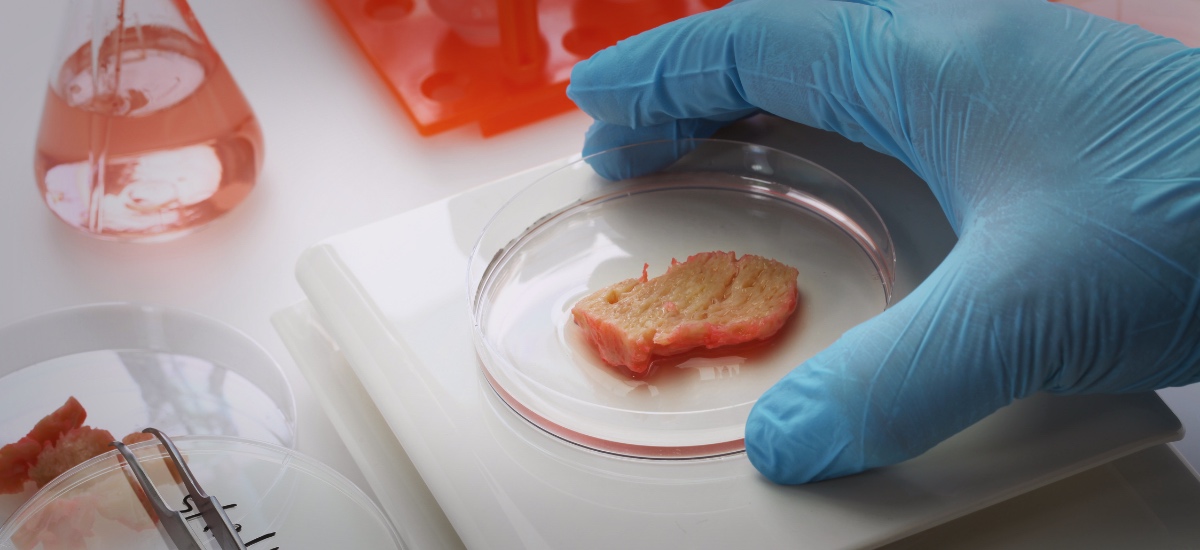Published on 7 October 2021
While we might be familiar with plant-based food products (made up of plant-derived proteins such as soy, tofu, brown rice, or pea proteins) developed by food companies, cultured meat products are a relatively novel entry into the food landscape.
Cultured meat, also known as clean meat, in-vitro meat or lab-grown meat, is meat that has been grown in a lab using animal cells. Ms Ong Kai Wen, Senior Dietitian, Department of Dietetics, National University Hospital (NUH), explained, “Cultured meat is an alternative to meat, grown from muscles or fat cells of animals in a culture medium (in-vitro), outside of the actual animal itself.”
With global meat consumption proving to be an ecologically unsustainable process, cultured meat provides a balance between the demand for real meat products alongside an environmentally-sound method of consumption. Because cultured meat only requires the cells of an animal, it may provide a slaughter-free, humane way of evolving our eating habits, while not compromising on a familiar flavour profile.
Making cultured meat
So how is cultured meat created?

The process begins by procuring starter cells from an animal’s body that are attained during biopsies. “The sample of cells are selected, screened and multiplied in an appropriate culture medium which provides nutrients, hormones and growth factors under a tightly controlled environment. Exponential cell growth in bioreactors allows the formation of the ‘meat’ with characteristics of muscles and fats. Products can then be harvested and prepared using conventional food processing and packaging methods,” Ms Ong explained.
Known health benefits
As cultured meat is still in its infancy stages, there is a lack of long-term scientific data that showcases the true, continuing health benefits or drawbacks of this bleeding edge product.
However, given its lab-based origins, Ms Ong said that cultured meat products can reasonably have a few advantages to our dietary intake. “Cultured meat products could potentially be less prone to microbial contamination (i.e. E. coli and other intestinal pathogens), lowering biological risk and its associated diseases, through standardised production methods.
The ability to tailor what gets added in the production of these products may contribute to improved nutrition, for example, the possibility of creating a product with lower cholesterol and saturated fat than the meat counterpart,” she commented.
The capacity to adjust and control fat and cholesterol levels in lab grown meat is a key factor in creating and maintaining healthier populations, since blood cholesterol levels can lead to cardiovascular diseases. “Mimicking meat with enhanced nutritional properties, the ideal cultured meat should consist of highly digestible proteins with excellent amino acid composition, ideal fatty acid composition, minerals like iron, zinc and selenium, B vitamins and other bioactive compounds like taurine and creatine,” Ms Ong shared.
What’s next?
While cultured chicken has been approved for sale at selected venues in Singapore, there is still little known about how accepting diners are of their next meal growing in a petri-dish. What will the future of food bring next? We can only wait and see.
In consultation with Ms Ong Kai Wen, Senior Dietitian, Department of Dietetics, National University Hospital.




